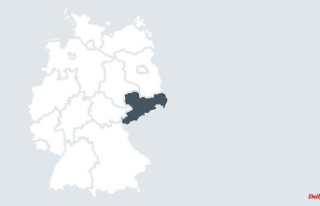With these avant-gardists, Audi took the lead in the 1980s: The streamlined duo Audi 100/200 (C3) shed the conservativeness of their predecessors, attacked the S-Class and set world records in a row. No wonder that film heroes from James Bond to Professor Brinkmann now drove in Audi.
"Vorsprung durch Technik" was Audi's legendary advertising slogan, which was first introduced with the futuristic NSU Ro 80 Wankel sedan and from then on served as the brand credo. In line with this guiding principle, the new editions of the Audi 100 and 200 (C3) appeared in 1982/83, which accomplished what the Ro 80 never really managed to do: successfully shake up the automotive premium class as the most technologically avant-garde products of their era.
In fact, the large Audi limousines not only shared the aerodynamic line and the design feature of the three side windows with the Ro 80, the double 100/200 also amazed under the bodywork with an unprecedented firework of innovations.
Supercharged five-cylinder engines, economical, direct-injection diesel, quattro all-wheel drive, hybrid technology, fully galvanized bodies with the world's lowest cd value (0.30), motorsport championships and various Vmax and efficiency world records, this is how the models 100 anchored and 200 the Audi brand in the automotive upper house.
"Who has the right of way in the S-Class?" European specialist media asked, and the Chinese answered: "Hongqi" (red flag), because that was the name of the Audi 100 produced by FAW in Changchun from 1988, which was a success as a representative sedan. In this country, the situation was not quite as clear, which is why Audi added the luxury liner V8 in 1988. Another relative of the duo 100/200 (C3), which at that time was already well on its way to becoming a million seller.
"Audi 100. The best car in the world. The car of the year. The golden steering wheel. The car of reason. Never before have the press, experts and drivers been so unanimous about a new car," sounded the advertising drum of the brand with the four rings , after the third generation of the Ingolstadt mayor had won just about every important award. Nobody expected that 40 years ago. After all, the previous Audi 100 and 200, despite front-wheel drive and five-cylinder engines, were the epitome of conservative official limousines, for which there was still a ban on entering executive parking spaces.
Audi's transformation into a driver of innovation began in 1974, when Ferdinand Piech took over the management of the development department and promoted the brand's higher positioning. The Audi Quattro, presented in 1980, represented the first quantum leap, which was followed in 1981 by a bold but near-production streamlined research car that already anticipated the design language of the Audi 100 (C3).
This dynamically designed four-door shook the bastion of stiff BMW, Mercedes and Volvo, squeezed subscribed family sedans such as Opel Rekord and Ford Granada for bestseller position and proved to be even more forward-looking than the exalted Citroen CX and Rover V8 Vitesse. Not only the sales charts reflected the success of the Audi 100, the ring bearer also won almost all comparative tests thanks to more space, superior driving performance and lower fuel consumption. A lead that is also due to the extremely aerodynamic design.
"We made the wind whisper," said Audi marketing, and experts confirmed that wind noise was "air" for the Audi 100. The reason for this were new panes integrated into the body, which dampened annoying noises even at high speeds. The downside: the generous glazing transformed the interior into a veritable greenhouse when the sun was shining, a newly developed air conditioning system with two heat sensors was only an option, and the standard ventilation was completely overwhelmed. It wasn't easy for Audi to win this battle against the unwanted superlative "world's hottest car". However, the problem soon affected other streamlined models, such as the Opel Omega or Mercedes W124.
But Audi had set itself higher goals: the more powerful sister models Audi 200 (from 1983) and V8 (from 1988) should, the marketing strategists hoped, establish themselves at the same level as the BMW 7 Series and Mercedes S-Class. Not to forget the Avant (from 1983) as a consistent lifestyle station wagon, which, with its sloping, generously glazed rear, was reminiscent of extravagant shooting brakes such as the Volvo 1800 ES and became a design icon in Scandinavia, but also in France.
On the other hand, the Avant, which was praised by the specialist media as a technological "super station wagon", was at a disadvantage in the payload capacity section compared to the Mercedes T-model, Volvo 240 station wagon, Citroen CX or Granada Tournament. The Avant drove ahead in terms of electrification, so it made its debut in 1989 as a small-series Audi Duo with a hybrid drive, in which a petrol engine drove the front wheels and a 9.4 kW/13 hp electric motor the rear wheels.
On the other hand, the first German direct-injection diesel engine made the Audi 100 Avant TDI the world's first 200 km/h station wagon with a compression-ignition engine, while a TDI sedan surprised with an average fuel consumption of 1.76 liters of diesel in a record-breaking 5,000-kilometer drive .
Even more headlines resulted in top speed values. Be it the Audi 200 Avant Quattro 20V with a five-cylinder engine delivering 162 kW/220 hp, which was the first mass-produced wagon to break the 240 km/h mark, or the 650-hp Audi 200 projectile that reached 345 km/h in Nardò, Italy reached, or as an Audi 100 Quattro driving very slowly but inexorably up a snow-covered Finnish ski jump, communicated worldwide through award-winning commercials.
And then there was the 200 Quattro, which was the first Audi factory racer to start since the Silver Arrow era and won the American Trans-Am series right away, while the Audi V8 with eight-cylinder power and all-wheel drive paved the way for the top premium class from 1988 and at least by winning the championship title in the DTM in 1990 and 1991 clearly outclassed its arch-rival Mercedes-Benz. However, the V8 hardly played a role in the registration statistics; only its successor, the Audi A8, succeeded in doing so.
"New competitor in the S-Class: Audi 200 Turbo" had already written in specialist magazines in 1983 about the sensationally fast five-cylinder and compared it with the Mercedes 280 SE, BMW 732i and Jaguar XJ6. The prestige of the four rings and the noblesse of the turbo engine were still missing for the time being, otherwise the sedan was certified as having the level of comfort befitting its status.
Appearances of the Audi 200 in the TV cult series "Schwarzwaldklinik" also told of this. Leading actor Klausjürgen Wussow, alias Professor Brinkmann, used the four-wheel drive there, in the James Bond film "The Living Daylights" actor Timothy Dalton relied on the pursuit potential of the fast sedan and also in the Hollywood blockbuster "E.T." the Audi took over the leading automotive role.
A celebrity status that the Audi 200 (C3), which sold only 93,000 units up to 1991, was still denied in registration rankings, but it opened the door to the House of Lords wide. Meanwhile, the Audi 100 had exceeded all expectations; he was now considered the benchmark in the fine middle class.












